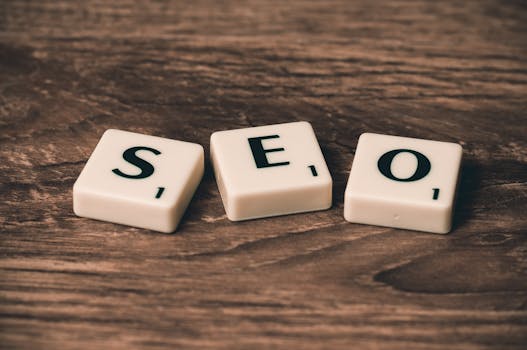How To Create Meta Tags For Multi-Language Websites
Understanding the Importance of Meta Tags in Multilingual SEO
Meta tags are your secret weapon for multilingual SEO. They tell search engines what your content is about in various languages. Without them, your site might as well be invisible to non-native speakers!
When crafting title tags, think local. Each language deserves a unique title that resonates with its audience. According to the HubSpot Team, “A multilingual website allows brands to connect with users in their native language, which improves user experience and can significantly impact search rankings.”
Meta descriptions? They’re not just summaries; they’re your sales pitch. Make them enticing! Use culturally relevant idioms and keywords that speak to your audience. A well-optimized meta description can boost your click-through rates.
Now, let’s talk about hreflang tags. They’re essential for directing users to the right language version. Without them, users might land on a page in a language they don’t understand. That’s a quick way to lose visitors.
Many SEO pros swear by traditional methods, but I think we should embrace dynamic content generation. Instead of static meta tags, why not use AI to create personalized tags based on user behavior? This could lead to higher engagement and better SEO performance!
Finally, incorporating local keywords is a game changer. Research what locals are searching for and weave those keywords into your meta tags. This strategy can dramatically boost your visibility in diverse markets, as highlighted by Michael J. Smith, who states, “Utilizing specific local keywords within your meta tags can dramatically accentuate your visibility in diverse markets.”
Benefits of Localized Content
Localized content is not just about translation; it’s about connecting with your audience. Here’s why it matters for your multilingual meta tags.
- Localized content boosts engagement. Users feel more connected when they see familiar phrases and cultural references.
- Improved search visibility. Using local keywords in meta tags increases your chances of ranking higher in regional searches.
- Higher click-through rates. Well-crafted, localized meta descriptions attract more clicks by resonating with the target audience.
- Enhanced user experience. When users find content in their language, they’re more likely to stay and explore.
- Better brand perception. Companies that localize show they care about their customers, which builds trust and loyalty.
Leveraging Meta Descriptions for Better Engagement
Meta descriptions are like the storefront window for your webpage. They need to grab attention instantly. A well-crafted meta description can significantly boost your click-through rates.
For multilingual sites, it’s not just about translation. You have to localize them! Use idioms and phrases that resonate with each audience. This makes users feel understood and valued.
Most people think static translations are enough. I think we should go further by using AI-driven tools to create personalized meta descriptions. These tools analyze user behavior and preferences, generating dynamic content that speaks directly to the user’s interests.
According to Rayne Aguilar from Weglot, “Mastering the art of crafting compelling meta descriptions for your store can significantly boost your online visibility and drive traffic.” I couldn’t agree more! The right words can turn a casual browser into a customer.
Another angle to consider is how local keywords play a pivotal role. Incorporating them into your meta descriptions can enhance visibility in regional searches. It’s not just about being seen; it’s about being relevant.
And here’s something that often gets overlooked: user experience. If your site is easy to navigate and loads quickly, users are more likely to engage with your meta tags. Great UX means better interaction with your content.
So, if you want to stand out in the crowded digital marketplace, think beyond basic translations. Embrace innovation and personalization in your meta descriptions!
Exploring Dynamic Content Generation for Meta Tags
Most people think static meta tags are the way to go for multilingual sites. But I believe dynamic content generation offers a smarter approach. This technique tailors meta tags based on user behavior and preferences, making them more relevant.
Imagine algorithms adjusting your meta descriptions in real-time! It’s that simple. Instead of generic tags, users see personalized content that resonates with their interests. This can skyrocket your click-through rates.
According to Weglot, “Mastering the art of crafting compelling meta descriptions for your store can significantly boost your online visibility and drive traffic.” This aligns perfectly with the idea of dynamic content generation.
Many SEO experts advocate for traditional methods, but I think we need to embrace technology. By leveraging AI-driven tools, we can analyze user interactions and create tailored meta descriptions. This shifts the focus from merely translating to truly localizing content.
Imagine serving different meta tags to users based on their previous interactions. It’s a game changer! This approach not only enhances user engagement but also improves your website’s overall performance.
Incorporating dynamic content generation can redefine how we approach multilingual SEO. It’s about understanding your audience and delivering what they want, when they want it. After all, who wouldn’t want a more personalized browsing experience?
[Using Local Keywords in Meta Tags]
Here’s how to effectively use local keywords in your meta tags for multilingual websites. These tips will help you connect with your audience on a deeper level.
- Research local search trends. Knowing what your audience searches for locally can guide your keyword choices.
- Integrate local keywords naturally. Use them in a way that feels organic within your content.
- Customize for cultural relevance. Different regions may prefer different terms; reflect that in your tags.
- Test and optimize regularly. Monitor how your keywords perform and tweak them as necessary.
- Utilize tools for keyword insights. Tools like Google Trends can provide valuable data on local keyword popularity.
- Keep an eye on competitors. See what local keywords they’re using and learn from their strategies.
- Avoid keyword stuffing. Quality over quantity; ensure your tags are user-friendly.
- Engage with local communities. Understand their language and preferences for more effective keyword usage.
Crafting Unique Title Tags for Each Language
Creating unique title tags for each language is a game changer. These tags should resonate with the local audience. They aren’t just translations; they need to reflect cultural nuances and local search behavior.
Most people think that a direct translation of the title is sufficient. I believe that’s a huge mistake. Tailor your title to include local keywords and phrases that users actually search for. This makes your content more relatable and discoverable.
For instance, a title that works in English might flop in Spanish. Instead, use tools like Google Keyword Planner to find local terms that have higher search volumes. This is where the magic happens!
According to the Webflow blog, “By using a multilingual website structure with proper meta tags and translations, businesses can open themselves to new markets and audiences.” That’s the essence of crafting effective title tags!
But don’t stop at just titles. Think about testing different versions. A/B testing can reveal what resonates best with your audience. It’s not just about what looks good; it’s about what works.
Also, consider using dynamic content generation tools. They can adjust your title tags based on user behavior. Imagine having titles that adapt in real-time to the interests of your visitors!
And let’s not forget about the importance of hreflang tags. They help search engines understand which language version to serve. This prevents confusion and boosts your SEO.
Incorporating local keywords into your title tags is essential. This simple step can dramatically enhance your visibility in diverse markets. Don’t overlook this!
Best Practices for Optimizing Multilingual Meta Tags
Creating effective meta tags for multilingual websites is key to enhancing visibility and engagement. Here are some best practices to follow.
- Craft unique title tags. Each language version deserves its own title that resonates with local audiences.
- Customize meta descriptions. Tailor these summaries to reflect cultural nuances and local keywords.
- Incorporate hreflang tags. This helps search engines direct users to the appropriate language version, avoiding confusion.
- Test and optimize. Regularly analyze performance and tweak your tags for better results.
- Utilize local keywords. Research and include terms that your target audience is searching for.
- Consider dynamic content. Use tools that adapt meta tags based on user behavior for personalized experiences.
Integrating Hreflang Tags Effectively
Hreflang tags are a must-have for multilingual websites. They tell search engines which language version to show based on a user’s location. This is a game changer for user experience!
Many folks think that just translating content is enough. But I believe that without hreflang tags, you risk serving the wrong language to the wrong audience. That can lead to frustration and a drop in rankings.
Implementing hreflang tags is straightforward. You simply add them in the head section of your HTML. For example, if you have an English version for the US and a Spanish version for Mexico, you’d set them up like this: <link rel="alternate" href="URL" hreflang="en-US" /> and <link rel="alternate" href="URL" hreflang="es-MX" />. Easy, right?
Some people argue that hreflang tags are complex and unnecessary. But I think they are essential because they prevent duplicate content issues. They help Google understand the relationship between pages in different languages, enhancing your site’s SEO.
According to Omid Ghiam from Webflow, “By using a multilingual website structure with proper meta tags and translations, businesses can open themselves to new markets and audiences.” That’s the power of hreflang!
Plus, don’t forget to test your hreflang implementation. Tools like Google Search Console can help you identify any issues. Keeping an eye on this can save you from potential headaches down the line.
In conclusion, integrating hreflang tags is a smart move for any multilingual website. They not only boost your SEO but also enhance user satisfaction. So, what are you waiting for?
Aug 15, 2023 … Implement hreflang tags to indicate language and regional variations. Create separate XML sitemaps for each language/country. Optimize metadata …
How to Handle SEO Audit Metrics for Multi-Language and Multi …
Sep 7, 2024 … … websites aiming to operate across multiple language markets. This technique involves creating a mock-up version of your site where the …
Jul 30, 2022 … The only thing you can do is, create separate pages for each language version. In that case, your English page will have an English meta …
html – Meta descriptions for multilingual site – Stack Overflow
Feb 19, 2014 … Your website is multilingual, but each webpage only has one language? Now you want to specify meta data (by using meta ) for each page in all …
How can I add use meta description and meta keyword tags on a …
Apr 18, 2016 … … a website that has English meta tags!? Crazy … I am working now on EN and DE websites on a website … Example: City-Specific Pages for …
Duplicate page titles because of multi language setting | SEO Forum …
Mar 17, 2023 … Hi there Is it possible to make multi lingual websites with Blocs? Like proper ones with correct links and SEO for the url,meta tags, …
Multi lingual websites with Blocs – General Discussion – Blocs Forum
How can I create effective title tags for different languages?
Creating effective title tags for various languages is all about localization. You need to think beyond mere translation. Each title should resonate with the cultural context of your target audience.
Many believe that translating keywords is enough. I think it’s better to research local search behavior. For instance, a keyword in English might not have the same impact in French or Spanish.
According to the Webflow blog, “By using a multilingual website structure with proper meta tags and translations, businesses can open themselves to new markets and audiences.” This highlights the importance of tailoring your titles.
Consider dynamic content generation tools. Most people think static titles are the best option. I think using AI to adjust titles based on user behavior can significantly boost engagement. This way, you’re not just guessing what works.
Lastly, local keywords are key. Incorporating them into your title tags can dramatically enhance visibility. As noted by American Eagle, “Utilizing specific local keywords within your meta tags can dramatically accentuate your visibility in diverse markets.” So, don’t overlook this!
What are meta tags, and why are they important for multilingual websites?
Meta tags are the backbone of SEO for multilingual websites. They help search engines understand the language and context of your content. Without them, your site risks losing visibility in international markets.
Many believe that translating content is enough. I think it’s not just about translation; it’s about localization. Tailoring your meta tags to resonate with local audiences is key.
For example, using local keywords can significantly boost your rankings in specific regions. Unique title tags for each language version can capture diverse interests. They should reflect cultural nuances and preferences.
Some experts argue for dynamic content generation for meta tags, adjusting them based on user behavior. I believe this approach is powerful because it personalizes the user experience, leading to higher engagement.
As Rayne Aguilar from Weglot puts it, “Mastering the art of crafting compelling meta descriptions for your store can significantly boost your online visibility.” It’s not just about being seen; it’s about being clicked.
Let’s not forget about hreflang tags. They prevent duplicate content issues and guide users to the right language version. This is crucial for maintaining a good user experience.
For more insights on this topic, check out Feather’s best practices and Weglot’s multilingual SEO guide.
What role do meta descriptions play in SEO for multilingual sites?
Meta descriptions are like your website’s first impression. They summarize page content and entice clicks. For multilingual sites, they must be tailored to each language, capturing local idioms and context.
Many think that a simple translation suffices, but I believe localization is key. It’s about resonating with cultural nuances and expectations. A well-crafted meta description can significantly boost click-through rates.
According to Rayne Aguilar from Weglot, “Mastering the art of crafting compelling meta descriptions for your store can significantly boost your online visibility and drive traffic.” This shows how powerful these descriptions can be!
Some experts argue for static descriptions, but I think dynamic content generation tools are the future. They adjust based on user behavior, making descriptions more relevant in real-time.
Let’s not forget about local keywords. Incorporating them into meta descriptions is essential for regional SEO. This strategy enhances visibility and attracts targeted traffic.
How do hreflang tags enhance user experience?
Hreflang tags are a game changer for multilingual websites. They tell search engines which language version to show based on a user’s location. This means users get content in their preferred language, making their experience much smoother.
Many think that simply translating content is enough. But I believe using hreflang tags is crucial because they prevent confusion and improve user satisfaction. Without them, users might land on the wrong language version, leading to frustration.
According to the HubSpot Team, ‘A multilingual website allows brands to connect with users in their native language, which improves user experience and can significantly impact search rankings.’
So, implementing hreflang tags not only enhances user experience but also boosts SEO. It’s a win-win!
Some experts argue that relying solely on hreflang tags is enough to manage multilingual SEO. But I think that’s shortsighted. It’s important to combine them with well-crafted meta tags and localized content. This holistic approach ensures that users find exactly what they need, driving engagement and conversions.
Can AI tools help in generating meta tags?
Most people think AI tools are just a gimmick for generating meta tags. I believe they can be revolutionary because they analyze user behavior and preferences to create tailored meta descriptions. Imagine having descriptions that adapt in real-time to what users are searching for!
Using AI means you can automate the tedious process of crafting meta tags. This can save time and allow you to focus on other aspects of your SEO strategy. According to Rayne Aguilar from Weglot, “Mastering the art of crafting compelling meta descriptions for your store can significantly boost your online visibility and drive traffic.” Why not let AI help you master that art?
Some argue that traditional methods are sufficient, but I think relying solely on static meta tags is limiting. AI can provide insights that traditional approaches simply can’t match. With tools that analyze patterns, you can create meta tags that resonate more with your audience.
Incorporating AI in your strategy doesn’t mean losing control. You can still review and tweak the generated tags to align with your brand voice. It’s about enhancing your workflow, not replacing it.
Meta tags are the backbone of multilingual SEO. They tell search engines what your content is about in various languages. A unique title tag for each language version can grab attention from diverse audiences.
Meta descriptions should reflect the page content accurately while enticing clicks. They’re your chance to make a strong first impression!
Many believe static meta tags are enough, but I think dynamic content generation is the way to go. Personalized meta tags based on user behavior can boost engagement significantly.
According to the HubSpot Team, “A multilingual website allows brands to connect with users in their native language, which improves user experience and can significantly impact search rankings.”
Understanding the importance of hreflang tags is key too. They help Google serve the right language version to users, enhancing their experience.
Most people believe that generic title tags work for everyone. I think unique title tags are key because they resonate with specific cultures and languages. Tailoring these tags can boost click-through rates significantly.
Consider this: a title in Spanish should not just be a direct translation. It should reflect local nuances and phrases. According to the HubSpot Team, ‘A multilingual website allows brands to connect with users in their native language.’
Many SEO experts recommend using dynamic content generation for meta tags. This approach adjusts based on user behavior, making it more relevant. It’s that simple!
Incorporating local keywords is another game changer. This strategy enhances visibility in regional searches, attracting the right audience.
Most people think meta descriptions are just summaries. I believe they should be compelling hooks that spark interest. A great meta description is like a teaser—short, snappy, and relevant.
According to Rayne Aguilar from Weglot, crafting engaging meta descriptions can boost visibility and traffic. I totally agree!
Dynamic content generation for meta tags is a game changer. Instead of static descriptions, personalized ones can be created based on user behavior. This approach can lead to higher engagement, and it’s worth exploring.
Let’s not forget about local keywords! Incorporating them into your meta tags can significantly enhance your search visibility. It’s all about connecting with your audience in their language.
Most people think hreflang tags are just technicalities. I believe they’re game-changers for multilingual SEO because they guide users to the right content in their language. Without them, search engines can serve the wrong language version, frustrating users.
Implementing hreflang tags is crucial for avoiding duplicate content issues. It tells search engines about the relationship between different language versions. This improves user experience and can positively affect your search rankings.
According to the HubSpot Team, ‘A multilingual website allows brands to connect with users in their native language, which improves user experience and can significantly impact search rankings.’
Some experts suggest using dynamic content generation for meta tags instead of traditional methods. This approach personalizes meta tags based on user behavior, making them more relevant. It’s that simple!
Understanding the importance of local keywords in meta tags is another topic worth exploring. They can dramatically enhance visibility in diverse markets, as noted by Michael J. Smith who said, ‘Utilizing specific local keywords within your meta tags can dramatically accentuate your visibility in diverse markets.’

Albert Mora is an internationally renowned expert in SEO and online marketing, whose visionary leadership has been instrumental in positioning Seolution as a leader in the industry.












